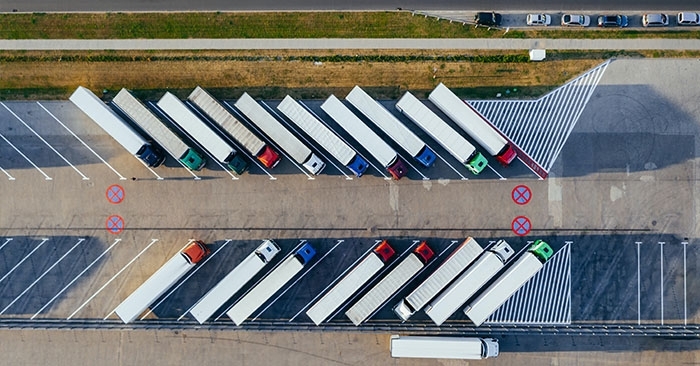Four strategies that can help India combat higher logistics costs

Logistic costs in India have been an area of concern for a while now, especially in terms of global market competition and the recent thrust on making India the global manufacturing hub with the ‘Make in India’ movement. In the backdrop of the pandemic, even as global trade slowly comes back to speed, mounting logistics costs pose a major hindrance to the growth of the sector and the economy at large.
While the National Logistics Policy (NLP) is already in the final stage, there are some basic factors that can help combat higher costs on the ground level, writes Hector Patel of Jeena & Company.
As of December 2020, India’s supply chain and logistics sector was pegged at $215 billion, and is one of the fastest-growing sectors in the country, registering a growth of 10.5 percent CAGR. Further, only 10-15 percent of the $215 billion is comprised of organised players while the vast majority of the sector remains unorganised and fragmented. The e-commerce and the online segment of logistics are estimated to account for $20 and $30 billion by 2025.
According to a new report by Arthur D Little and the Confederation of India Industry (CII), India’s Logistics and supply chain costs currently amount to a staggering $400 billion, up to 14 percent of the GDP, 9 percent of China and an average of 8 percent recorded by the US and Europe. Compared to the global average of 8 percent, India’s logistic cost has raised a competitiveness gap of approximately $ 180 billion!
Delving deeper, we can identify some key challenges faced by the Indian logistic sector, that have been contributing to higher costs and the overall slow growth of the sector:
1. Fragmented industrial clusters
Most organised logistics service providers cater to industries in Metropolitan regions (20 to 30 cities) or Special Economic Zones (SEZs) while the vast number of fragmented MSMEs and home and cottage industry players, spread across tier 2 and tier 3 towns and villages, are being forced to use service from local, unorganised logistics providers or government sources like India post. This disparity further enhances the disparity in cost and efficiency.
2. Lack of a uniform, national policy
Different transportation policies and tax structures across different states, enforced by local and national governing bodies, translate into duplication of effort, higher costs and eats up a lot of valuable time. Uniform national policy to govern the movement of goods within the country and within states, can go a long way in streamlining the supply chain.
3. Slow pace of digital adoption
Lack of organised players and an overall slow pace of digital adoption for businesses, especially among the tier 2 and tier 3 MSME and cottage industry players, is further delaying digital adoption for logistics and supply chain management, which in turn, contributes to higher costs.
4. Poor transportation infrastructure
Under-developed road network, lack of optimised use of river network for waterways and limited train and sea freight options, make for poor infrastructure for transport, within the country. Higher air freight costs and little or no option for sea freight, means companies have few options to choose from when selecting a cost-effective yet efficient mode of transport.
Now, while detailed National Logistic Policy (NLP) is already in the planning and undergoing final discussions in the parliament, some basic factors that can help combat higher costs, on the ground level, are as under:
1. Better route planning and consolidation of freight
This is one of the most fundamental aspects of cost and resource optimisation, for every logistic and supply chain service provider. By effective planning, route optimisation and consolidation of cargo, based on the destination, form an of transport and delivery timelines, one can achieve a much-reduced cost while adhering to all other service parameters, thereby making it effective and optimal.
2. Wider digital adoption across supply chain networks
With emerging technologies like warehouse Automation, real-time tracking updates, data-driven insights for cost optimisation and the use of ML and AI for monitoring, documentation, and customer engagement, tech adoption can go a long way in minimising human resources while optimising cost and efficiency, across supply chain channels.
3. Collaboration to optimise resources
This is a somewhat underrated and unexplored avenue for cost-effective logistics. Instead of investing and developing an in-house network, with limited reach, it is best to collaborate with players across geographies, so as to enhance reach while reducing cost and optimising services. From hiring transport fleets to looking at locally sourced labour and developing warehousing space in collaboration with locals, can be both cost-effective and help elevate the standards of tier 2 and tier 3 logistic services to match with those of organised players.
4. Developing 3PL and 4PL service provider networks
As an increasing number of start-up’s and SME/MSME entrepreneurs flourish, the need for outsourcing logistic and supply chain services to qualified professionals is also increasing. The rise of 3PL and 4PL service providers, when supported positively, can go a long way in building an affordable and quality logistic service provider network that can not only offer services at par with global standards but also reduce cost, optimise overall category growth and inspire uniformity in service standards.
As the world struggles with the post-pandemic economy, challenges like global imbalances, slow rate of global economic recovery, port congestion and closures as well as fewer alternatives to ocean freight, continue to further cause expensive delays and cost surcharges. In line with the above points, while India is making the right policy changes and driving forward with a focussed agenda, it is ultimately up to individual logistic players to work within the new guidelines and drive the change.
 | Hector Patel is the executive director and board member of Jeena & Company |
The views and opinions expressed in this article are those of the author and do not necessarily reflect the views of Indian Transport & Logistics News



